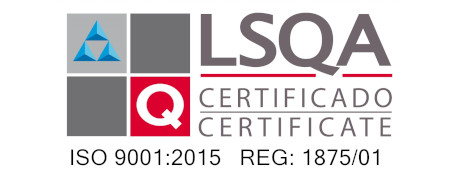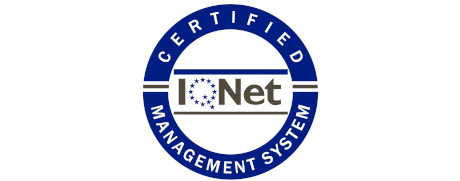Safety Bulletin
Users and operators of Prowinch hoists, cranes, and other related equipment must be knowledgeable about safe and proper use of equipment. They should also be aware of their responsibilities as outlined in all appropriate standards and regulations.
The ASME/ANSI B30 Standard contains provisions for the construction, installation, operation, inspection, testing, maintenance, and use of cranes and other lifting and related equipment.
As OSHA's, ASME, and ANSI standards state, a qualified person shall perform the installation, setup, and operation of these units and equipment.
OSHA requires rated load tests for new and altered cranes. OSHA's standard at 29 CFR 1910.179(k) states:
- Operational tests.
-
Before initial use, all new and modified cranes shall be tested to ensure compliance with this section, including the following functions:
- Hoisting and lowering.
- Trolley travel.
- Bridge travel.
- Limit switches, locking, and safety devices.
- The trip setting of hoist limit switches shall be determined by testing with an empty hook, traveling at increasing speeds until reaching maximum speed. The actuating mechanism of the limit switch must be located so it trips the switch, under all conditions, in sufficient time to prevent any part of the trolly from contacting the hook or hook block.
- Rated load test. Test loads shall not be more than 125 percent of the rated load unless otherwise recommended by the manufacturer.
Once a rated load test is performed, paragraph 1910.179(k)(2) requires that test reports be placed on file where readily available to appropriate personnel.
To ensure safety and installation requirements, Prowinch requires load tests before using all hoists, winches, cranes, and other components. Not fulfilling this requirement can be hazardous, lead to equipment failure, and automatically void the warranty.
The B30 Standards are intended to:
- Prevent or minimize worker injury and otherwise provide for the protection of life, limb, and property by prescribing safety requirements.
- Provide direction to manufacturers, owners, employers, users, and others concerned with or responsible for its application.
- Guide governments and other regulatory bodies in developing and enforcing appropriate safety directives.
The equipment covered by B30 Standards is subject to hazards that cannot be avoided by mechanical means, but only by exercising best practices, care, and common sense.
It is imperative that competent, careful, physically and mentally qualified, and fully trained personnel operate any equipment and handle loads properly with safety in mind.
Serious hazards include:
- Improper or inadequate maintenance.
- Overloading.
- Dropping or slipping of loads.
- Obstructing the free passage of the load.
- Using equipment for a purpose for which it was not intended or designed.
**Failure to read, understand and follow the information in the corresponding ASME B30 Standard for your hoist and lifting equipment may result in severe INJURY or DEATH. It is YOUR RESPONSIBILITY to consider all risk factors and follow all the equipment related ASME B30 standards, which comprise the following:
ASME B30 standards include:
- B30.1 Jacks, Industrial Rollers, Air Casters, and Hydraulic Gantries.
- B30.2 Overhead and Gantry Cranes (Top Running Bridge, Single or Multiple Girder, Top Running Trolley Hoist).
- B30.3 Tower Cranes.
- B30.4 Portal and Pedestal Cranes.
- B30.5 Mobile and Locomotive Cranes.
- B30.6 Derricks.
- B30.7 Winches.
- B30.8 Floating Cranes and Floating Derricks.
- B30.9 Slings.
- B30.10 Hooks.
- B30.11 Monorails and Underhung Cranes.
- B30.12 Handling Loads Suspended from Rotorcraft.
- B30.13 Storage/Retrieval (S/R) Machines and Associated Equipment.
- B30.14 Side Boom Tractors.
- B30.15 Mobile Hydraulic Cranes.
- B30.16 Overhead Hoists (Underhung).
- B30.17 Overhead and Gantry Cranes (Top Running Bridge, Single Girder, Underhung Hoist).
- B30.18 Stacker Cranes (Top or Under Running Bridge, Multiple Girder with Top or Under Running Trolley Hoist).
- B30.19 Cableways.
- B30.20 Below-the-Hook Lifting Devices.
- B30.21 Lever Hoists.
- B30.22 Articulating Boom Cranes.
- B30.23 Personnel Lifting Systems.
- B30.24 Container Cranes.
- B30.25 Scrap and Material Handlers.
- B30.26 Rigging Hardware.
- B30.27 Material Placement Systems.
- B30.28 Balance Lifting Units.
- B30.29 Self-Erecting Tower Cranes.
- B30.30 Ropes.
Do Not
*Please read the items below to protect you and others around you.
- DO NOT Operate, install, or repair the hoist unless you are trained and authorized.
- DO NOT Operate the hoist unless you have first read the operator's manual.
- DO NOT Operate the hoist without appropriate PPE and without performing a pre-shift inspection.
- DO NOT Operate the hoist if it does not comply with all required OSHA regulations.
- DO NOT Lift more than the rated load.
- DO NOT Lift people or lift loads over people.
- DO NOT Wrap the hoisting rope or chain around the load.
- DO NOT Operate with the chain/rope not seated correctly in the sprockets, drum, or sheave.
- DO NOT Operate hoist unless the direction of the hook travel agrees with the direction shown on the control.
- DO NOT Operate the hoist unless the hook travel limit devices function correctly. (Test without a load PRE-SHIFT)
- DO NOT Operate the hoist with twisted, kinked, damaged, dirty, or unlubricated chains or rope.
- DO NOT Operate a damaged or malfunctioning hoist.
- DO NOT Operate the hoist when the hook is not centered under the hoist
- DO NOT Remove or hide any WARNING & SAFETY LABELS
Daily Checklist
Tagged hoist: Ensure the crane or hoist is not tagged out of order.
Control Devices: Conduct a test run. Ensure all motions agree with control device markings.
Brakes: Check all motions for excessive drift and abnormal stopping distances.
Hook: Check for damage, cracks, nicks, gouges, deformations on throat opening, wear on saddle or load-bearing point, and twisting.
Hook latch: Check for proper operations.
Wire rope: Check for broken wires, strands, kinks, and deformation or damage to the rope structure.
Chain: Check chains for corrosion, wear, elongation, twist, nicks, or gouges. Keep chain/wire rope clean and lubricated.
Reeving: Check the rope for proper reeving and that rope parts are not twisted.
Limit switches: Ensure that all limit devices can stop lifting motion before the load block or chain/rope stop strikes the hoist.
Oil leakage: Check for any oil leakage on the crane/hoist and the surrounding floor.
Unusual sounds: Check for unusual sounds from the hoist while operating.
Warning & safety labels: Ensure that labels are not missing and are legible.















